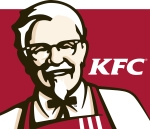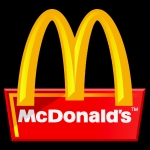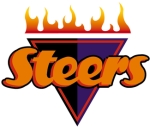Activity 6 |
Let's look at some of our Eating Habits |
| | Introduction
Since we all live in an urban area, most of us get our food from supermarkets and if we are busy and stressed the many fast food outlets in a city as big as Pretoria save us the the hassle of having to cook a meal.
Let's be honest: processed and fast foods are convenient and take the schlepp out of having to cook every day. But, are they healthy?
Note:
The calorie is a unit to measure energy and is defined as the amount of energy needed to raise the temperature of one gram of water by one degree Celsius. Nutritionists often use the Calorie (with a capital "C"), sometimes called the food calorie; this Calorie = 1000 cal = 1 kcal.
Use kcal or joules (1 kcal = 4184 joules) in your assignment.
|





|
Your Tasks
- As a group complete the first page of the 'Healthy Eating Worksheet' - download the Word document if necessary.
- Take-away Menu
Scenario: You are spending the day away from home and have been given enough money to buy a main meal from one of the five fast food franchises listed:
Debonairs, KFC, McDonalds, Nandos and Steers.
Each group member has to select a different fast food outlet.
- Choose your favourite meal, consisting of more than 1 item, plus a drink, from the menu of your fast food outlet.
- Go to the website of the fast food franchise and find the nutritional information of your meal. Nutritional information for the different franchises is linked from the logos on the left.
You can also search for your meal components on the fatsecret South Africa site at http://www.fatsecret.co.za/calories-nutrition/ or on calorie count at: http://caloriecount.about.com
- Create a word document in your folder (YourSurname) on the network drive, filename: YoursurnameMealFranchise. (Example: NordhoffMealDebonairs.)
- List the nutritional information (calories, carbohydrates, protein, sugar, fat, sodium) in a table for all meal items as well as the drink.
Example table shown below:
| Item |
calories |
carbs |
protein |
sugar |
fat |
sodium |
| Burger |
|
|
|
|
|
|
| Chips |
|
|
|
|
|
|
| Salad |
|
|
|
|
|
|
| Fruit juice |
|
|
|
|
|
|
| Total |
|
|
|
|
|
|
| % GDA |
|
|
|
|
|
|
- Calculate the totals and then the percentage "Guideline Daily Amounts (GDA's)" for energy, sugar, fat and sodium of your meal and drink using the table below.
Do your own calculations, don't use the once given on the web.
| Nutrient |
100% |
| Energy (kcal) |
2000 kcal |
| Protein (g) |
45 g |
Carbohydrates (g)
(includes 90 g for sugar) |
230 g |
| Sugars (g) |
90 g |
Fat (g)
(includes 20 g saturates) |
70 g |
Sodium (mg)
Note: 2,4 g sodium = 6 g salt |
2400 mg |
- As a group transfer your total values to the table on the worksheet and calculate averages for the group.
|
| |
- Breakfast and supper - individual exercise
Let's assume that you had cereal with milk for breakfast that provided you with 400 kcal and the following nutrients:
15 g sugar, 10 g fat and 80 mg sodium.
Use this and the values of your franchise lunch to calculate how many calories, sugar, fat and sodium you have left for supper.
Make suggestions for a supper meal from your fast food franchise so that you do not exceed you daily calorie, sugar, fat and sodium allowance by more than 25%.
Do this in your word document. Search for nutritional information on the web.
|
| |
In your 'Healthy Eating' Word document, answer the following questions:
- Salt is used as a flavourant; list three 'other uses' for salt in processed food.
- Sugar is used as a sweetner; list three 'other uses' for sugar in processed food.
- Write down the names of 10 different 'sugars'.
- It has been sugested that our daily sugar intake should not exceed 25 g.
How much sugar did you consume during the day of this exercise?
- What is your favourite sugar sweetened drink?
- Read the articles about the introduction of a sugar tax for South Africa, linked below and discuss them with your group members. Decide as a group if you think the introduction of a sugar tax is a good idea. Capture your opinions in your Word document as well as on your group sheet.
- If the price of your favourite drink would increase, would you drink less of it?
Please give a reason for your answer.
|
| |
Find out more about the contoversial introduction of a sugar tax later this year
|
| |
More links to useful food related information
|
| |
Assessment
Feedback at next UP with Science meeting.
|
References & Resources and additional Readings
- Jane Byrne. 2011. South African food industry faces regulatory action on salt. Food Navigator.com. Viewed online on 27 February 2014 at: http://www.foodnavigator.com/Legislation/South-African-food-industry-faces-regulatory-action-on-salt
- Amy Goodman & Juan González. 2013. Salt Sugar Fat: NY Times Reporter Michael Moss on How the Food Giants Hooked America on Junk Food. Democracy Now - a daily independent global news hour. Video viewed online on 25 February 2014 at: http://www.democracynow.org/2013/3/1/salt_sugar_fat_ny_times_reporter
- Samantha Grossman. 2014 Teacher Loses 37 Pounds After Three-Month McDonald's Diet - To be fair, he also exercised every day. Viewed online on 25 February 2014 at: http://newsfeed.time.com/2014/01/05/teacher-loses-37-pounds-after-three-month-mcdonalds-diet/
- Thalia Holmes. 2013.
Salt sellers shaken by Motsoaledi's rules. Mail & Guardian. Viewed online on 25 February 2014 at: http://mg.co.za/article/2013-04-05-00-salt-sellers-shaken-by-rules
- Laura Marie Meyers. 2012. A Daily Look at How Much Fat, Sugar, and Salt You Should Be EatingViewed online on 25 February 2014 at: http://www.fitsugar.com/Nutritional-Guidelines-Fat-Sugar-Salt-22089131
- Anita Mužek, Frank Newman. 2013. What effect did Supersize Me have on Morgan Spurlock and McDonalds?
ITAT Food Magazine. Viewed online on 25 February 2014 at: http://itat-food-magazine.blogspot.com/2013/05/what-effect-did-supersize-me-have-on.html
- PLoS Medicine. July 2012. ‘‘Big Food,’’ the Consumer Food Environment, Health, and the Policy Response in South Africa. Volume 9, Issue 7, e1001253. Viewed online on 8 September 2014 at: http://www.ploscollections.org/article/fetchObject.action?uri=info%3Adoi%2F10.1371%2Fjournal.pmed.1001253&representation=PDF
- US Department of Health and Human Services. 2008. A Healthier you. Viewed online on 25 February 2014 at: http://www.health.gov/dietaryguidelines/dga2005/healthieryou/html/chapter8.html
|